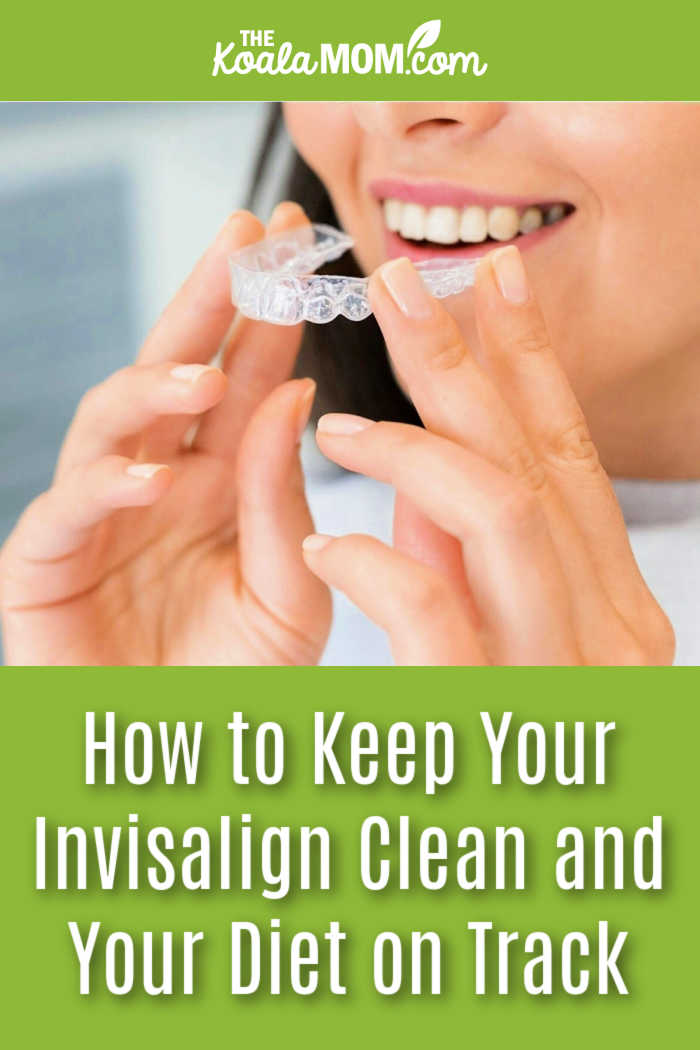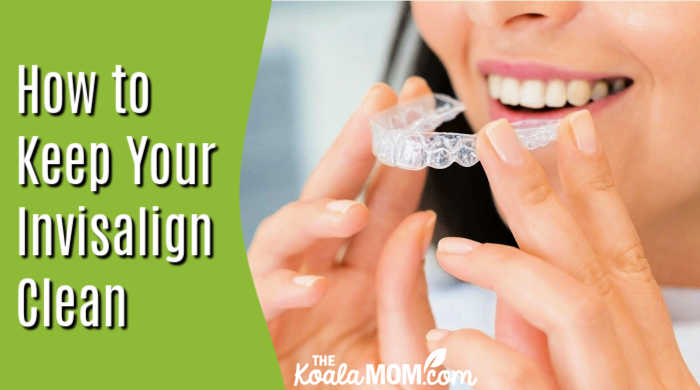If you’re navigating life with Invisalign, two priorities should be top of mind: cleanliness and consistency. Patients frequently ask if they can eat with Invisalign. While the aligners provide flexibility and aesthetics, they also require discipline—particularly around mealtime habits and oral hygiene.
In this article, we’ll break down practical tips for keeping your aligners clean and your nutrition balanced to support your smile goals.

Why You Can’t Eat with Invisalign
The Material Matters
Invisalign aligners are made of medical-grade plastic; they are not designed to withstand chewing. Eating while wearing them can cause:
- cracking or warping of the aligners
- staining from food or sauces
- food particles trapped inside the tray, leading to bacterial buildup
Always Remove Before Eating
Remove your aligners before consuming any solid food or colored/acidic drinks. Water is the only beverage considered safe while your aligners are in place.
Maintaining Clean Aligners
Keep your trays fresh and clear by:
- brushing them twice a day with a soft-bristle toothbrush
- rinsing them in lukewarm water (never hot)
- using Invisalign-specific cleaning crystals or gentle dish soap
For tougher buildup, consider soaking trays once a day in solutions recommended by your orthodontist or products like Retainer Brite or Steraligner.
Brush and Floss after Every Meal
Trapped food leads to bacteria and bad breath—and worse, cavities or gum irritation. Make it a habit to:
- brush your teeth thoroughly before reinserting aligners
- use floss picks if you’re on the go
- carry a compact hygiene kit for school, work, or travel
For detailed guidance on aligning your hygiene practices with smart meal strategies, explore this resource on maintaining oral hygiene and eating with Invisalign.
Structuring a Smart Diet with Invisalign
Because you need to remove aligners and clean your teeth every time you eat, many patients naturally shift toward 2–3 well-balanced meals per day and cut back on snacking. Prioritize foods that support dental health, including:
- calcium-rich options like yogurt or leafy greens
- crunchy fruits and veggies that help clean teeth (when aligners are removed)
- protein sources that reduce sugar cravings
Avoid:
- sticky, sugary snacks that cling to enamel
- acidic foods that soften enamel before trays are put back in
Build Better Meal-Time Habits
- Eat at set times to limit how often you remove trays
- Batch meals to reduce interruptions
- Avoid late-night snacking, which can cut into aligner time
Expert-Approved Best Practices
Your Invisalign provider has likely given you some advice about how to care for your teeth and trays during treatment. Numerous other experts have provided further advice on best practices for aligners. The team at Harvard Health emphasizes how high-sugar diets combined with poor brushing increases the risk of enamel erosion—especially in orthodontic patients. The Cleveland Clinic advises brushing after meals and staying away from acidic drinks while using Invisalign. They also recommend regular dental cleanings during treatment.
Invisalign and Your Long-Term Routine
Maintaining clean trays and smart eating habits during Invisalign often leads to better long-term oral health. You’ll become more aware of your nutrition, hydration, and dental hygiene—and these habits tend to stick even after treatment ends. For example, I wore traditional braces as a teenager, which meant I had to watch what I ate and clean my teeth regularly. Those habits have stuck with me into adulthood and my dentists have often praised my oral hygiene, particularly as I still have a retainer in place that stays very plaque-free due to my regular flossing and brushing.
Travel and Busy Schedules
Travel and busy schedules can both affect your regular routine and cause you to miss a cleaning or even misplace your aligners. To avoid this, pack extra aligners and cleaning tools on trips. Set phone reminders to stay on schedule. Drink more water to reduce cravings and stay fresh.
Additional Tips for Daily Invisalign Success
Eating Out or Social Events
Going to restaurants or attending social gatherings doesn’t have to be stressful. Bring your aligner case and excuse yourself to remove trays before eating. Rinse your mouth with water after meals if brushing immediately isn’t possible, and be sure to clean your aligners before reinserting. Chewing sugar-free gum for five or ten minutes can also help clean your mouth by stimulating saliva production, which helps to wash away food particles and neutralize acids that can erode tooth enamel.
Managing Soreness from New Trays
It’s normal to feel mild discomfort when switching to a new set of aligners. Stick to softer foods like scrambled eggs, smoothies, or steamed vegetables for a day or two to ease the pressure.
Build a Portable Oral Care Kit
Your on-the-go kit should include a toothbrush, travel toothpaste, floss picks, a collapsible cup, and a backup aligner case. Having these essentials nearby makes it easy to stay on track with hygiene no matter where you are.
So, can you eat with Invisalign? Not while your trays are in—but by committing to a clean, structured routine, you’ll not only protect your aligners but build lifelong habits that benefit your smile and your health. Plan smart, clean consistently, and embrace the Invisalign lifestyle with confidence.


No Responses Yet